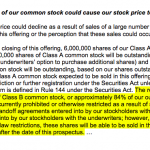The struggling homebuilding industry heaved a sigh of relief after housing starts data for August came in above expectations and saw the biggest increase in seven months. U.S. housing starts climbed 9.2% to a seasonally adjusted annual rate of 1.28 million units. The solid data came after a decline of 0.3% in July and 11.4% in June.
The uptick in construction activity was driven by a solid 29.3% surge in apartment construction and a modest rise of 1.9% in single-family homes.
While starts recovered after two straight months of decline, building permits — a construction pointer for the coming months — unexpectedly dropped 5.7% to an annual rate of 1.23 million units. This represents the biggest drop since February 2017, suggesting that rising costs of lumber, land and labor are actually derailing the recovery in the housing market.

According to the National Association of Home Builders, lumber prices have shot up by about $7,000 per home since the start of 2017, largely due to Trump’s tariffs imposed on imports of Canadian softwood lumber. Additionally, homebuilders are witnessing a slowdown due to lower inventories and higher mortgage rates. With the Fed on track to raise its short-term interest rates over the next two years and unwind some of its prior asset purchases, longer-term interest rates, including that of mortgages, is on the rise, making homes costlier and hampering affordability.
However, accelerating job market with rising wages and lowest unemployment rate in nearly two decades will fuel strong demand for homes. This will, in turn, benefit homebuilders and the related ETFs.
Further, homebuilders are currently well placed, belonging to a top-ranked Zacks Industry (top 32%), suggesting that the ongoing headwinds will be unable to diminish their appeal.
ETFs in Focus
Given this, investors might want to look at the homebuilder ETFs — iShares U.S. Home Construction ETF (ITB – Free Report), SPDR S&P Homebuilders ETF (XHB – Free Report) and Invesco Dynamic Building & Construction ETF (PKB – Free Report) — for their exposure to the sector.













Leave A Comment